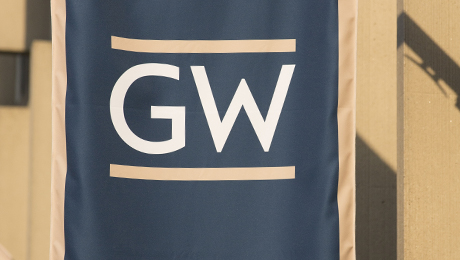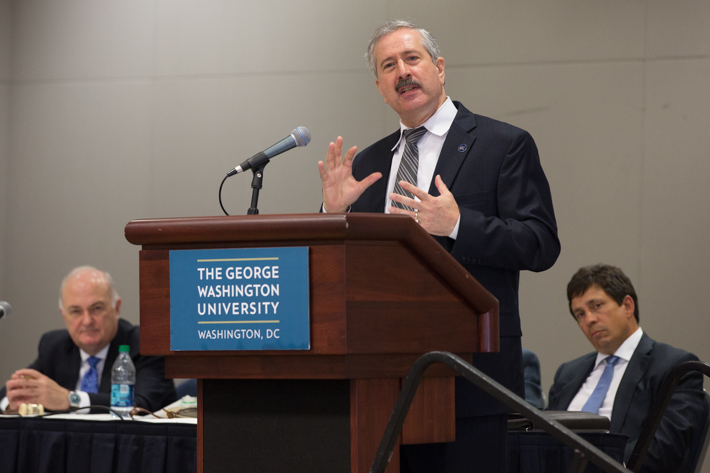Q: How will decisions be made about cuts to administrative units?
GW: As part of our five year budget planning process, administrative units (non-school units) are being asked to develop scenarios that show annual cost reductions of 3 and 5 percent. The plans will be consolidated and then reviewed with administrative unit leads and shared with the university’s deans; ultimately university leadership will make decisions on a final plan for implementation.
Q: When will cuts take effect?
GW: Administrative units are being asked to identify cost reduction scenarios beginning with FY 2017 as part of the five-year budget planning process. It is expected that plans will reflect a combination of savings in FY 2017 and additional savings over time.
Q: How will students be affected?
GW: The top priority is to limit effects on students. We will not be reducing undergraduate student aid, we will continue our fixed tuition policy, and remain committed to expanding student health and career services.
Q: Will there be cuts to services?
GW: Cost reduction strategies will come from improved efficiencies, expense controls, and restructuring. These strategies may include changes to services currently provided, with priority placed on minimizing impact on students.
Q: Will schools have to make cuts?
GW: Under the new budget model implemented in FY16, schools have more autonomy with their budgets and will be making decisions about how to best allocate their resources. Of course, the schools will need to continue focusing on building their enrollments to ensure that their revenues will be sufficient to meet their costs and support their aspirations. And, we anticipate individual schools will continue to make strategic decisions to reallocate in order to make new investments while maintaining balanced budgets.
Q: Will merit increases still be awarded for FY16?
GW: Yes.
Q: Will merit increases be awarded going forward?
GW: The overall university budget, including the merit pool, is approved annually. As part of their cost reduction scenarios, individual units may propose to allocate their anticipated future merit funding toward savings targets within their organization.
Q: How will this affect the benefits pool and benefits offerings by the university?
GW: Our priority continues to be offering a robust and competitive package of benefits to our faculty and staff. The Benefits Task Force created by President Knapp has made important recommendations that we look forward to discussing and evaluating in further detail in the months ahead.
Q: Will there be layoffs?
GW: Each administrative unit is being asked to evaluate how it would cut its budget by 3 and 5 percent per year over the next five years. We do expect some units will propose reductions to their overall compensation budgets; this savings could be realized through attrition, elimination of open positions, delayed filling of open positions and layoffs if a unit chooses to do so.
Q: Will there be a hiring freeze? Longer waiting period for new hires?
GW: We do not anticipate a change to the approval process for filling current positions in administrative units, which requires a six-month waiting period. Individual units may elect to eliminate or delay filling open positions as part of their cost reduction strategies.
Q: How is the university able to expand by adding programs, building new buildings etc. in the midst of these budget challenges?
GW: Longer-term improvements to the university’s infrastructure that are currently under construction, including the District House residence hall, are budgeted separately on a multi-year basis through our capital budget and are investments in the future of the university. Although we are asking divisions to identify budget reductions, we must move forward on high priority programs and projects. New programs and strategic initiatives will continue to be funded.
Q: Will there be any evaluation of possible eliminations of programs?
GW: The cost savings plans that administrative units are being asked to develop may include changes to current programs and initiatives.
Q: If more money is now going to the schools under the new budget model, what are the improvements students can expect to see that will offset the cuts that will be made to centrally administered services?
GW: The university’s goal is to have a larger portion of the budget allocated to instruction, while finding efficiencies in service delivery.
Q: What is happening with ITF and with existing ITF initiatives? What role will ITF play moving forward?
GW: ITF has helped to mitigate the impact of the budget shortfall. Over the past five years, ITF has been able to generate a combined savings and new revenue of $32 million. That amount was included in the FY16 budget and invested in academic and student support initiatives. Without ITF, we would not have been able to afford these new investments.
Q: What about the Making History campaign?
GW: While the university is facing a challenging fiscal environment, our fundraising remains robust. We are well over the $800 million mark toward the $1 billion attainment goal of the Making History campaign. The campaign focuses on key university priorities: supporting students, enhancing academics, and breaking new ground, including through research. The work of the campaign will continue and will help fund strategic initiatives into the future.




